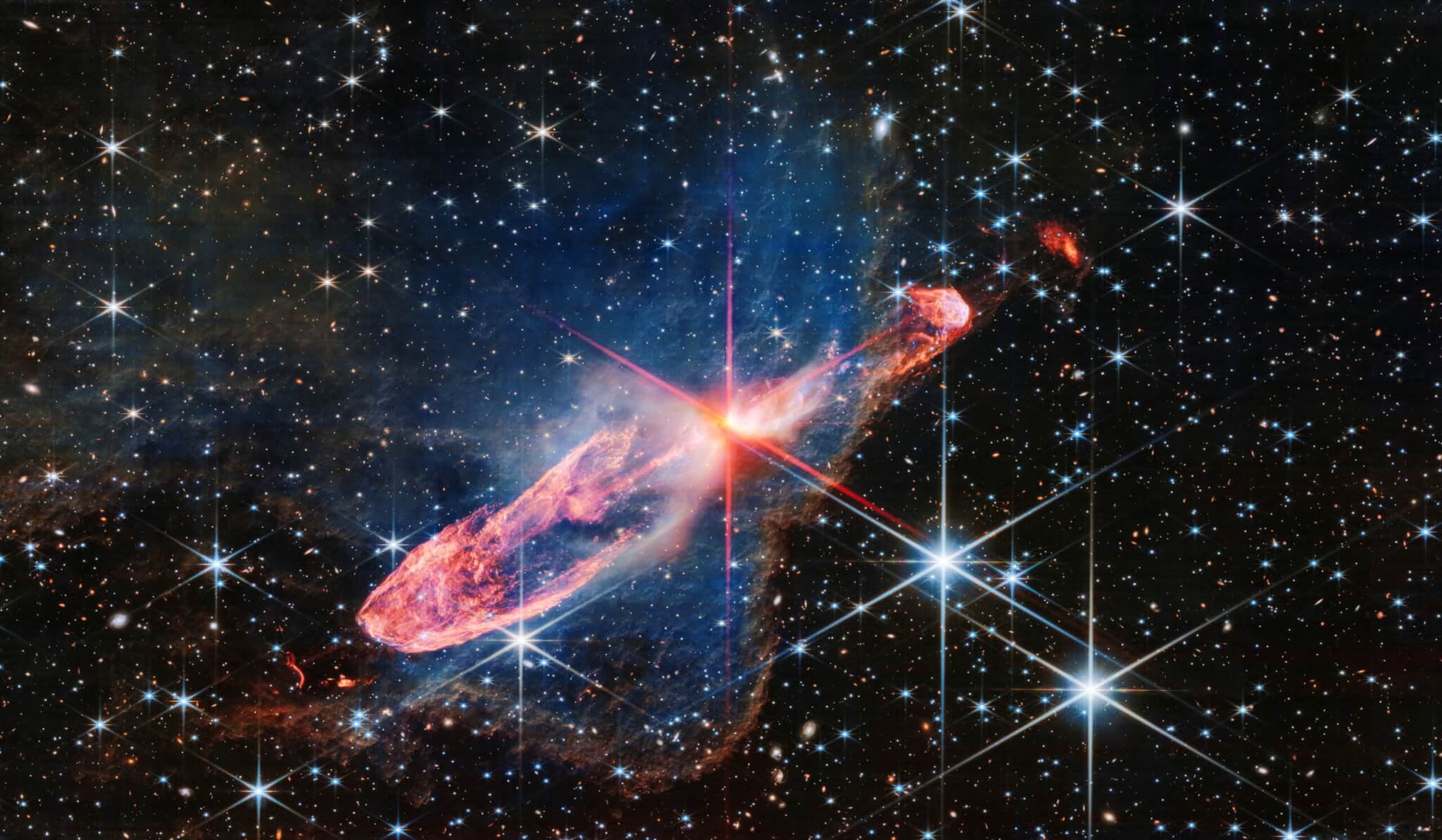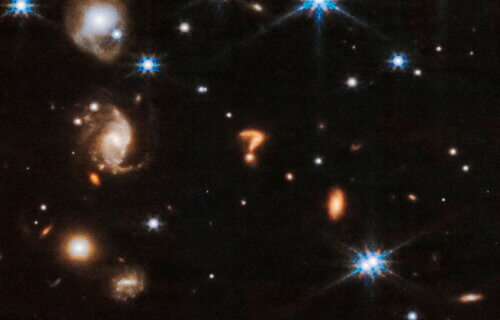BALTIMORE — It’s not the bat signal, but the Riddler may be on the prowl in deep space! Astronomers have spotted a cosmic question mark while using the new James Webb Space Telescope (JWST).
NASA’s newest space probe trained its sights on a tightly bound pair of actively forming stars, known as Herbig-Haro 46/47. However, eagle-eyed space watchers were drawn to a tiny, but intriguing, detail in the high-resolution near-infrared light image produced. Small, but visible in the scene 1,470 light-years away is a distinct question mark shape.
According to Space.com, representatives of the Space Telescope Science Institute (STScI) suggest it could be a distant galaxy, or interacting galaxies interacting to form a “distorted question mark-shape.” Online comments have included “almost looks like a black hole ripping apart a star,” and “soon, I’ll bet they find the Twitter X.”

“Herbig-Haro 46/47 is an important object to study because it is relatively young – only a few thousand years old. Stars take millions of years to fully form. Targets like this also give researchers insight into how stars gather mass over time, potentially allowing them to model how our own Sun, a low-mass star, formed,” the Space Telescope Science Institute explains, describing the original subject of the image, in a media release.
“Take a moment to linger on the background. A profusion of extremely distant galaxies dot Webb’s view. Its composite NIRCam (Near-Infrared Camera) image is made up of several exposures, highlighting distant galaxies and stars. Blue objects with diffraction spikes are stars, and the closer they are, the larger they appear. White-and-pink spiral galaxies sometimes appear larger than these stars, but are significantly father away. The tiniest red dots, Webb’s infrared specialty, are often the oldest, most distant galaxies.”
The Webb telescope is currently the largest telescope in space, being equipped with high-resolution and high-sensitivity instruments, allowing it to view objects too old, distant, or faint for the Hubble Space Telescope.
You might also be interested in:
- James Webb telescope stunningly updates classic space image of the ‘Pillars of Creation’
- JWST discovery could explain how Saturn got its rings
- Hubble Telescope captures heavenly image of merging galaxies forming an ‘Angel’ in space
South West News Service writer Dean Murray contributed to this report.

